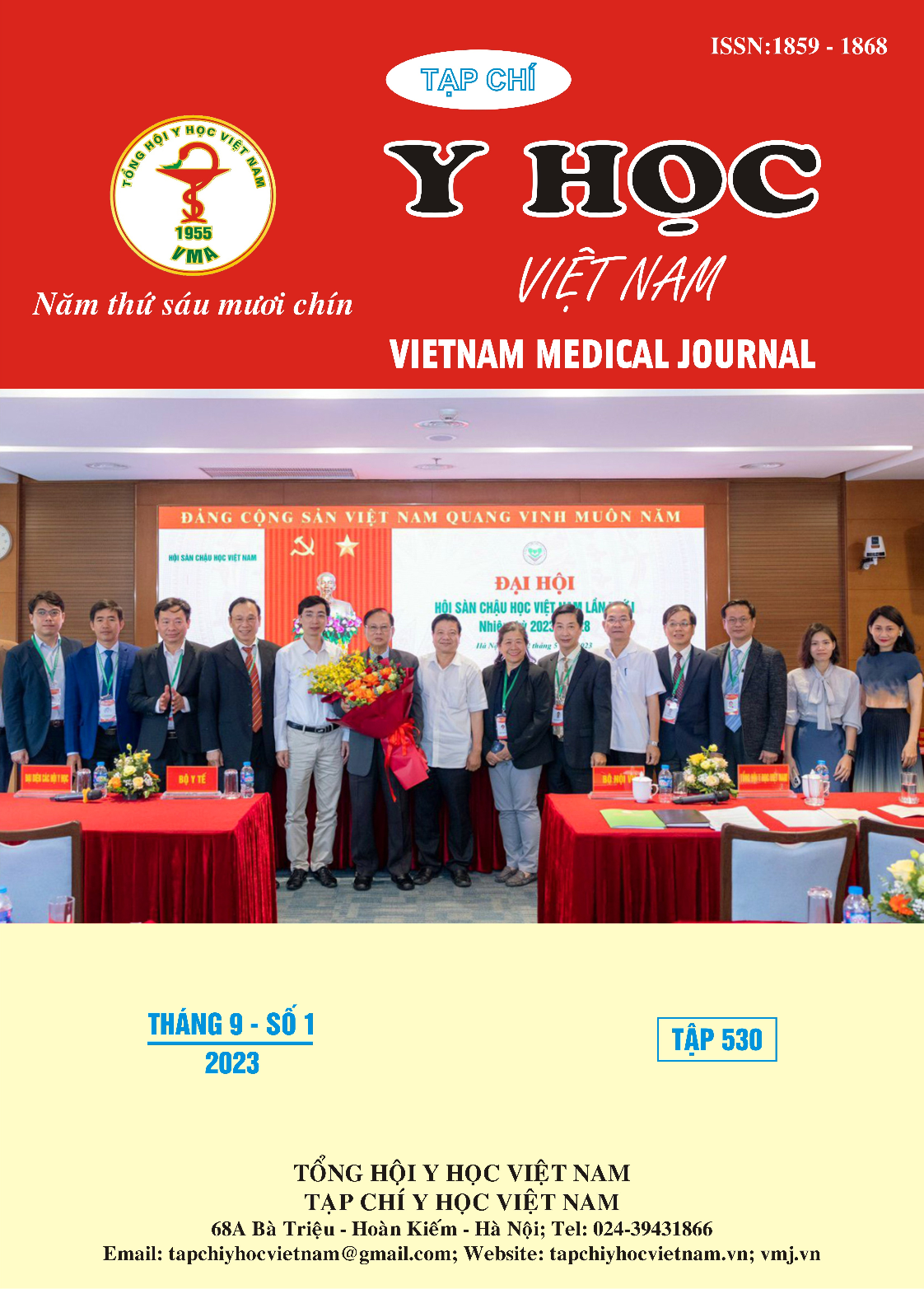THE CHARACTERISTICS OF CORONARY ARTERY LESION IN PATIENTS WITH VENTRICULAR ARRHYTHMIAS OLDER THAN 45 YEARS OLD
Main Article Content
Abstract
Objective: To study the characteristics of coronary artery lesion in patients with ventricular arrhythmias older than 45 years old. Subjects and methods: 101 patients were diagnosed ventricular arrhythmias, classified ≥ Lown 2, at Nghe An Friendship General Hospital. The patient had coronary angiography (CAD) via catheters and the results were evaluated by QCA method. Results: 101 patients had ventricular arrhythmias ≥ Lown 2, had coronary angiography through catheters, 60 patients had coronary artery lesions, accounting for 55,4%; coronary artery stenosis ≥ 50% is 5,9%; stenosis 50 - 70% is 13,9% and stenosis ≥ 90% is 16,8%. Coronary artery lesion of one branch accounted for 34,7%; two branches is 12,9% and three branches is 7,9%. Coronary artery stenosis ≥ 70% of the vessel lumen are accounting for 30,7%; in which the left anterior descending artery (LAD) accounts for 20,8%, the left circumflex (LCx) coronary arteries is 7,0%, the right coronary artery is 14,8% and the left main (LM) coronary artery is 2%. Coronary artery stenosis ≥ 70% in the group ≥ 60 years old accounted for 39,7% was higher than 3,5 times (95% CI: 1,3 – 9,6) compared with the group 45 ≤ age < 60 years old was 15,8% (p < 0,01); the group ≤ average cardiovascular disease was 0.21 times (95% CI: 0,08 – 0,59 compared with the group ≥ high cardiovascular disease according to the SCORE 2 index (p<0,01); The ventricular arrhythmia (VA) group orgin from left ventricle accounted for 44,1%, that was higher than 2,52 times (95% CI: 1,04 – 6,06) compared with the VA group orgin from right ventricles (p<0,05). The rate of coronary artery stenosis ≥ 70% at the locations orgining VAs: right ventricular outflow tract (RVOT) is 13,8%, left ventricular outflow tract (LVOT) is 36% and other locations are 22,2% (p < 0.01). Conclusions: The rate of coronary artery lesion in patients with ventricular arrhythmias was 55,4%; in which coronary artery stenosis ≥ 70% accounted for 29,7%, the lesion of one coronary artery branch accounted for 34,7%, two branches is 12,9% and three branches is 7,9%. The rate of coronary artery lesion increases in group with high risk of cardiovascular disease. Ventricular arrhythmias orgins from RVOT and LVOT coexists with coronary artery disease, the VA orgining from other locations is related signification to the dgree of coronary artery lesion.
Article Details
Keywords
Ventricular arrhythmias, ventricular premature contractions, coronary artery lesion, ischemic heart disease, coronary artery angiography, coronary artery disease.
References
2. Zeppenfeld, K., et al., 2022 ESC Guidelines for the management of patients with ventricular arrhythmias and the prevention of sudden cardiac death: Developed by the task force for the management of patients with ventricular arrhythmias and the prevention of sudden cardiac death of the European Society of Cardiology (ESC) Endorsed by the Association for European Paediatric and Congenital Cardiology (AEPC). 2022. 43(40): p. 3997-4126.
3. Wit, A.L., et al., Electrophysiological Foundations of Cardiac Arrhythmias: A Bridge Between Basic Mechanisms and Clinical Electrophysiology. 2020: Cardiotext Publishing.
4. Kimura, S., et al., Cellular electrophysiological changes during ischemia in isolated, coronary-perfused cat ventricle with healed myocardial infarction. 1988. 78(2): p. 401-406.
5. Tế, B.Y., Hướng dẫn quy trình kĩ thuật nội khoa chuyên ngành tim mạch. 2017, Nhà xuất bản y học, Hà Nội.
6. Lawton, J.S., et al., 2021 ACC/AHA/SCAI guideline for coronary artery revascularization: executive summary: a report of the American College of Cardiology/American Heart Association Joint Committee on Clinical Practice Guidelines. 2022. 145(3): p. e4-e17.
7. Vyas, P., et al., Coexistent coronary artery disease in Indian patients undergoing permanent pacemaker implantation (PPI) for symptomatic bradyarrhythmia. Indian Heart J, 2021. 73(5): p. 577-581.
8. Yannopoulos, D., et al., Coronary Artery Disease in Patients With Out-of-Hospital Refractory Ventricular Fibrillation Cardiac Arrest. J Am Coll Cardiol, 2017. 70(9): p. 1109-1117.
9. Hashemi, M., et al., Main clinical determinants of the presence of coronary artery disease in patients with left bundle branch block. Acta Bio-medica: Atenei Parmensis, 2015. 86(3): p. 267-272.
10. Marcus, G.M., Evaluation and management of premature ventricular complexes. Circulation, 2020. 141(17): p. 1404-1418.


